Australian Food Dishes: Basic Overview
Common Ingredients
Common Cooking Methods
Courses
Meals
Key Taste
Eating Etiquette
Meal Presentation
Culinary Festivals
Influence and Fusion
Popular Types of Australian Dishes
-
Grilled and Barbecued Dishes
Australians often use fresh, locally sourced meats and seafood for grilling and barbecuing.
These dishes are ideal for outdoor cooking, especially during the warmer months.
Locals’ emphasis is often on the natural flavors of the food, with seasoning used to complement rather than overpower.
-
Cakes and Pastries
Fruits, nuts, and dairy products are common ingredients for these dishes, which are sourced locally.
These delights are often enjoyed during afternoon tea, a tradition that reflects the British influence on Australian culture.
Plus, certain cakes and pastries are associated with celebrations or holidays.
-
Casseroles and Bakes
These dishes are often considered comfort food. They’re especially popular in the cooler months.
The ingredients and styles of these dishes vary widely, reflecting the multicultural influence on Australian cuisine.
Australian dishes reflect a mix of indigenous ingredients and global influences, such as European delights, Asian culinary masterpieces, and Indigenous cultures.
Renowned for its use of diverse, fresh ingredients, from native “bush tucker” like macadamia nuts and Kakadu plum to a wide variety of meats and abundant seafood, each food showcases Australia’s culinary diversity.
Many popular dishes are hearty meals and sweet indulgences while embracing the local produce and multicultural heritage.
In the reading, you can have a deeper look at 25 common specialties of Australians. Then, don’t miss out on key characteristics and drink pairing of these delights.
So let’s jump into these 25 popular Australian dishes now!
25 Most Popular Australian Dishes with Filters
Australian cuisine presents impressive flavors, and these 25 popular dishes are the best examples. Utilizing advanced filters, you can easily navigate through a list based on name, main ingredients, taste, cooking methods, dish types, and more.
From the most popular to traditional, national, exotic dishes, or even the favorite street food offerings, they will impress you!
Vegemite, meat Pie, barramundi, and pavlova are national dishes that hold a special place in the hearts of Australians.
Street food in Australia typically consists of savory pies and sausage rolls.
Australian exotic dishes use unique ingredients like kangaroo, emu, crocodile meat, and bush tucker foods like wattleseed and finger lime.
Vegemite
- National
- Traditional
Vegemite is an Australian thick, dark brown food spread made from brewer’s yeast extract, which is a by-product of beer production, and vegetable and spice additives.
The texture of the paste is smooth with a salty and slightly bitter taste. It has a distinctive aroma that is strong and savory, which is often compared to soy sauce or meat extract.
Vegemite is commonly spread on bread, crackers, or toast, with Vegemite on toast considered an Australian national dish. This food is also used as a flavoring for soups, stews, and gravies.
In the United Kingdom, Marmite is a similar thick dark brown spread. However, Marmite has a burnt brown color with a sticky texture, while Vegemite is darker in color with a thicker consistency.
Meat Pie
- National
- Street Food
- Traditional
Meat pie is a popular takeaway snack in Australia, which is also a national dish in the country.
It’s palm-sized with a flaky layer outside and a juicy filling containing minced meat, gravy, mushrooms, onions, and cheese. The meat used in the pie varies, with ground beef being the most common one.
You can find meat Pie everywhere throughout this country, from small unbranded outlets to huge branded bakeries and restaurants!
Fish and Chips
- Street Food
- Traditional
As its name suggests, Fish and chips basically include battered and deep-fried fish and French fries (aka chips).
The most popular types of fish for fish and chips in Australia include barramundi, flathead, snapper, flake, hoki, and whiting. The fish is coated in a light, crispy batter, often made from flour, beer, and baking powder, providing a golden crunch with flaky flesh fish inside.
It was originally an iconic British dish before becoming popular worldwide. The first shop selling Fish ‘N Chips was by a Greek migrant named Athanasias Comino, who opened it in 1879.
Nowadays, there are approximately 4000 Fish ‘N Chips shops all around Australia. It is also a really popular name on the menu of most pubs and eateries in this country.
Barramundi
- National
- Traditional
Barramundi, also called Asian sea bass, is a staple food in many coastal regions of Australia. With a delicate, sweet flavor and a buttery texture, this fish has become a popular choice for many dishes, including grilled, baked, or fried delights.
They are especially common in making fish and chips. Plus, barramundi has a low content of calories with a large amount of omega-3 and vitamins.
Chicken Parmigiana
- Traditional
Chicken parmigiana is a favorite Australian poultry dish, including chicken breast coated in breadcrumbs and dipped in tomato sauce and cheese.
In this nation, its name may vary due to the region. The most well-known variants are “Parmi,” “Parma,” and “Parmy.”
You can order a dish of chicken parmigiana as a staple of pub food. It’s normally served with chips and salad as a side or along with a glass of beer.
Sausage Sizzle
- Street Food
- Traditional
Sausage sizzle is an Australian sausage typically made from pork, beef, or mutton, seasoned with common spices like salt, paprika, and pepper.
Sausage sizzle also refers to a community event or fundraiser in Australia where sausages (“snags”) are grilled on a barbecue and served in hot dog buns with grilled onions and sauces (tomato sauce, mustard, BBQ sauce, etc.).
Quick fact: The term “snag” comes from the British slang word “snaggle,” which means sausage. And “sausage sizzle” has also been used to call the barbecue snag itself since the 1980s.
Pavlova
- National
- Traditional
Pavlova is a famed dessert in Australia made from egg whites and baked in a slow oven for a crisp crust outside.
This baked item is traditionally topped with whipping cream and tasty Australian fruits, most of which are berries.
It is named after Anna Pavlova, a renowned Russian ballerina. It was first a simple cream cake without an official name until the 1920s when it celebrated the dancer’s tours to Australia and New Zealand.
Pavlova is often popular during summertime or on special occasions, especially on Christmas. But you can always find it in many supermarkets or bakeries around the country any time of the year.
Lamington
- Traditional
Lamington is an Australian square sponge cake or butter cake bathed in chocolate sauce and sprinkled with desiccated coconut.
The original version of Lamington includes cream or strawberry jam filling in between the cake layers.
Lamington is light and fluffy in texture, with a slightly crumbly and moist interior. The outer layer of the chocolate sauce gives it a rich and sweet flavor, while the coconut adds a subtle nutty taste.
Lamington was named after Lord Lamington, the Governor of Queensland, in the final years of the 19th century. Today, this country even has a National Lamington Day, which occurs annually on 21 July.
Anzac Biscuit
- Traditional
Anzac Biscuit is a classic Australian cookie made from rolled oats, flour, butter, sugar, golden syrup, and coconut. The biscuits are known for their crunchy exterior and chewy interior.
They were originally made by the wives of soldiers during World War I and sent to the ANZAC (Australian and New Zealand Army Corps) troops because they kept well during naval transportation.
Kangaroo Meat
- Exotic
- Traditional
Kangaroo has become a favorite meat of indigenous Australians. Its meat is a kind of uniquely lean red meat with a firm and dense, yet surprisingly delicate.
Australians cook kangaroo meat like other types of meat: they can marinate and sauté or make it into a steak. Moreover, it’s available in supermarkets across the country.
This meat type is also super low in fat content.
Emu Meat
- Exotic
- Traditional
Emu is the largest flightless bird native to Australia. It’s a great source of protein in Australian cuisine, which tastes somehow like beef or lamb.
Unlike other types of poultry, Emu meat has a deep red color, similar to beef. Locals serve emu in many different ways. They can make it into steaks, wrap it with burger buns, or make meatloaf.
Finally, emu meat is also considered to be a healthy choice, as it is low in fat and high in protein.
Fairy Bread
- Street Food
- Traditional
Fairy bread is a beloved dessert in Australia, especially popular at children’s birthday parties.
It contains slices of white bread coated with butter and topped with solid layers of tiny rainbow-colored chocolate balls called “Nonpareils” or “Hundreds and Thousands.” The bread is typically cut into triangles, making them easy to handle and fun to eat.
Everyone from young to old in Australia adores the bread so much that this country even has a special day to celebrate this dish on 24th November annually!
Chiko Roll
- Street Food
- Traditional
Chiko Roll is another typical savory snack in Australia. The filling is mainly made from minced meat, barley and cabbage, carrot, and celery, and wrapped in a floured pastry.
The roll is then deep-fried and often enjoyed with a side of tomato sauce. It’s reminiscent of a spring roll, but larger and with a thicker pastry wrap.
Chiko Roll has a significant relationship with the surf culture of the people here. They sell it at the fish and chips shops or the corner kiosks by the beach for surfers to enjoy after a long surfing day!
Damper
- Street Food
- Traditional
Damper bread is an Australian soda bread that has been enjoyed for centuries, particularly by swagmen, drovers, and stockmen, who used to make it while camping in the outback.
The bread is made from just a few simple ingredients, including flour, salt, water, and sometimes milk. The dough is shaped into a round or oblong loaf and baked in a hot oven until golden brown.
The texture of damper bread can be dense and chewy, similar to a rustic loaf of bread. Its taste is subtly savory, with a slightly nutty flavor.
The bread pairs well with dishes, particularly soups, stews, and other hearty meals. It’s also commonly served with butter, honey, or jam as a simple snack or breakfast.
Tim Tam
- Traditional
Tim Tam is the brand of the all-time favorite chocolate biscuit of Australians. There are different flavors as well, such as dark or white chocolate, chocolate mint, chocolate orange, caramel, and honeycomb.
There is an enjoyable activity using Tim Tam called Tim Tam Slam! Using Tim Tam as a straw, a person will drink a hot beverage, such as hot cocoa.
Regarding its origin, Arnott’s, the famed Australian biscuit company, first introduced Tim Tam in 1964. It was also the creation of Arnott’s former food technology director.
Beetroot Burger
- Fusion
- Street Food
Beetroot burger is a unique Australian burger with the inclusion of a thick, juicy slice of beetroot, adding a sweet and earthy flavor along with a vibrant pop of color.
It also comes with other components, such as cheese, bacon, beef patty, fried eggs, avocado, pineapple, or grilled onions.
In Australia, burgers with beetroot reached their peak of popularity in the mid-20th century.
Dagwood Dog
- Fusion
- Street Food
Dagwood dog is the Australian version of hot dog sausage on a stick. The locals usually dip the sausage in corn-based or wheat-based batter and then bring them to deep fry in boiling oil. They will then serve this hot dog with some ketchup as a dipping sauce.
Dagwood Dog originates from American cuisine. In Australia, you can also find Dagwood dog under the names “pluto pup” or “dippy dog.” Its name also varies due to regional areas.
Don’t be mistaken between Dagwood dog and battered savv (battered sausage)! The latter is a saveloy sausage that is deep-fried in a wheat flour-based batter, while the former is a hot dog sausage on a stick that is dipped in batter and deep-fried in hot oil.
Witchetty Grub
- Exotic
- Traditional
Witchetty grub is a traditional food in indigenous Australian culture. It’s the larva of the cossid moth, found in the roots of the Witchetty bush that grows in central Australia.
In appearance, it’s plump and white and can be eaten raw or lightly cooked. When raw, the texture and taste are often compared to almonds. When cooked, the skin crisps up, and the inside becomes light and fluffy, resembling a scrambled egg.
Golden Gaytime
- Traditional
Golden Gaytime has many flavors for you to choose from! From the basics like strawberry and chocolate to more signature flavors like Unicorn, Piña Colada, Krispy Kreme, Birthday Cake, etc., you can pick anything you like or even combine them.
It was first released in 1959 and has maintained popularity ever since. It is a toffee wrapped in vanilla biscuit crumbs.
Iced VoVo
- Traditional
Iced VoVo is an Australian biscuit with a sweet biscuit base, topped with two strips of pink fondant icing and a central strip of raspberry jam, then sprinkled with desiccated coconut.
The biscuit is often enjoyed with a cup of tea or coffee and is commonly found in supermarkets and cafes throughout Australia.
Pikelet
- Traditional
Pikelet is simply the Australian version of pancakes, but they are much thicker and smaller than the original edition from France.
The recipe for Pikelet is nearly the same as American pancakes with baking powder, milk, eggs, sugar, and self-raising flour. Compared to the American pancake, Pikelet’s batter is somewhat thicker. Therefore, when it rises on the pan, it becomes heavier.
The toppings of Pikelet also include the most basic food items like jam, fruits, whipped cream, syrup, sugar, chocolate sauce, or whatever you like. Aussies like to have Pikelet in morning or afternoon tea.
Cruffin
- Fusion
Cruffin is an Australian pastry combining the best qualities of a muffin and a croissant. This delightful treat features the flaky, buttery layers of a croissant, artfully shaped into the familiar, cup-like form of a muffin.
The outer crust is crisp and golden, giving way to a soft, tender interior that often comes filled with various flavors like jam, cream, or custard.
The cruffin is typically dusted with sugar and can be enjoyed as a decadent breakfast or with tea.
Yo-Yo Biscuit
- Traditional
Yo-yo biscuit is a classic dessert in Australia that is popularly served during tea time or with coffee. The “biscuit” part consists of custard powder, icing sugar, butter, vanilla, and flour, while the filling includes a 3-ingredient buttercream.
Custard powder is the secret weapon of Yo-yo biscuits since it makes the biscuits creamier and tastier than typical baking powder. It also gives the sweet treats a beautiful yellowish color.
It is called Yo-yo for the appearance that looks pretty similar to the old version of the yo-yo toy.
Sausage Roll
- Street Food
- Traditional
Sausage roll is the perfect kick-off for a new day among many Australian breakfasts! The cook will wrap fresh sausages from beef or pork with a flaky dough cover to create palm-sized buns and bring them all to bake in an oven.
Aussie will serve sausage roll with unique condiments such as barbecue dipping sauce or kewpie mayonnaise. It can be a convenient lunch or snack for your kids to enjoy during break time in school, making it a favorite pastry of Australian children!
Continental Roll
- Fusion
- Street Food
Continental Roll, or Conti Roll, is another typical sandwich in Australian cuisine that adapts to Italian sandwiches. People will fill the bread roll with mixed meat (salami, mortadella, and coppa), cheese, dried tomatoes, pickled eggplants, beetroots, or carrots.
Locals usually sell it at lunch bars and delis. Furthermore, the Continental Roll is more popular in Perth, where it is considered an institution.
What Are the Influencers of Australian Dishes?
Below are four key characteristics that you should know about what has influenced Australian cuisine.
Next, check out some suitable drinks to complement these delicacies to enhance your meals’ quality.
What Beverages to Pair With Dish in Australia?
Here are some Australian drinks to pair with dishes in the country, organized by drink type:
Finally, if you find this article interesting and helpful, your like or share is highly appreciated. Also, leave me some comments below if you want to share your thoughts about these dishes. Thank you!














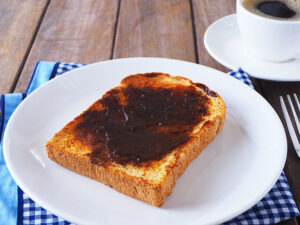
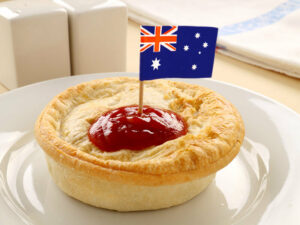
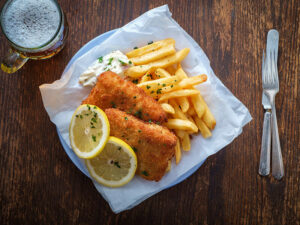
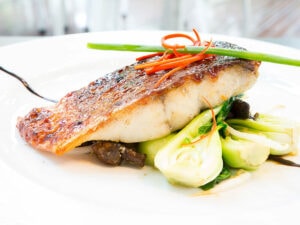
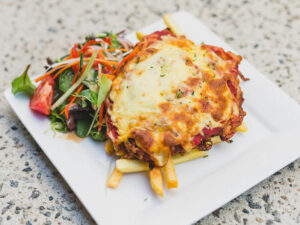
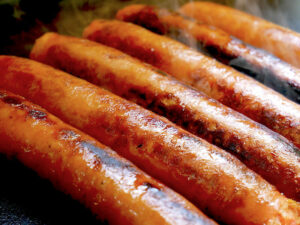
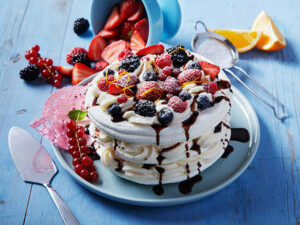
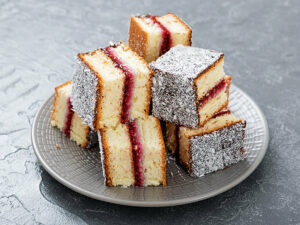
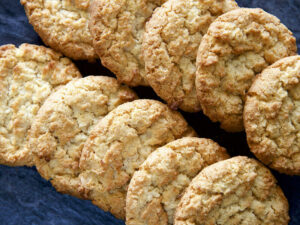
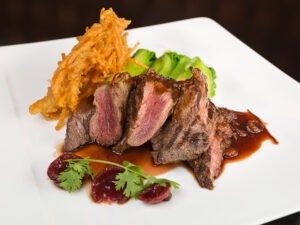
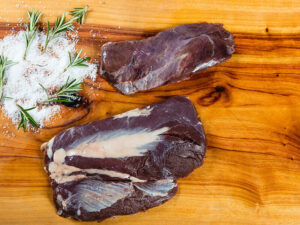


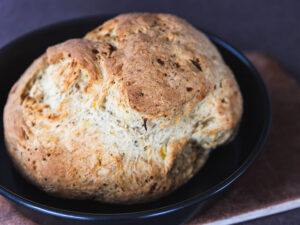
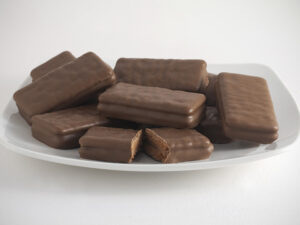
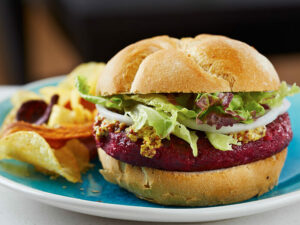
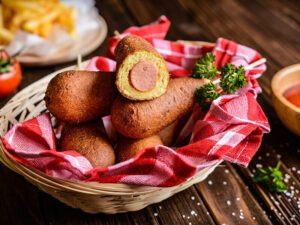
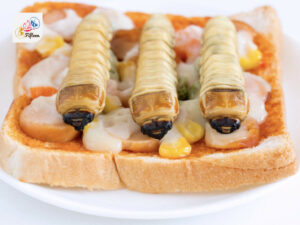
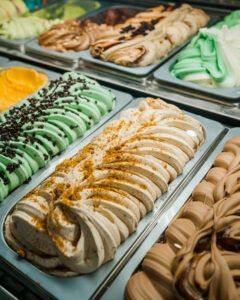

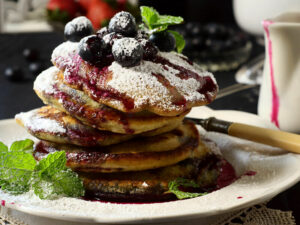
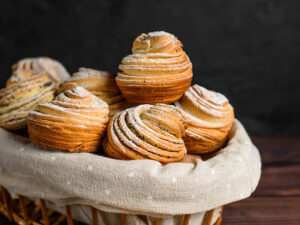
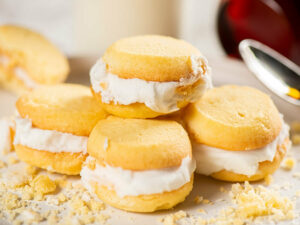
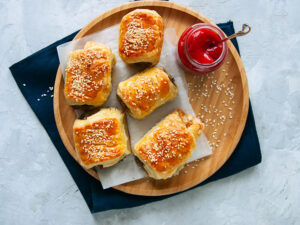
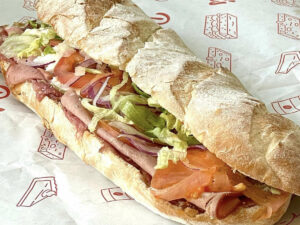

Jamie Scott
Editor in Chief, Senior Content Writer
Expertise
Home Cooking, Meal Planning, Recipe Development, Baking and Pastry, Food Editor, Cooking-video Maker, Western Food Evaluation Expert
Education
Le Cordon Bleu College of Culinary Arts
Local Community College, New York, NY
Jamie Scott is a skilled culinary expert and content creator specializing in Western cuisine. With over 15 years in the culinary field and formal training from Le Cordon Bleu, Paris, Jamie deeply understands how to blend nutrition with delicious flavors. His passion for cooking matches his commitment to making healthy eating accessible and enjoyable.
On Fifteen.net, Jamie brings a fresh perspective to classic dishes and beverages, offering readers insightful recipes, cooking tips, and a fresh view on meal planning that emphasizes taste, health, and simplicity.